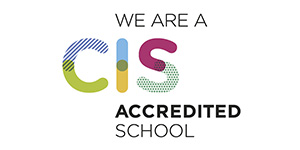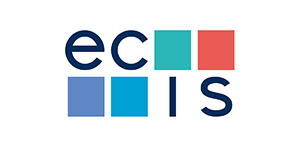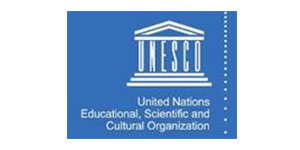Guidelines for an essay (Security Council)
How to Prepare for the MUN Conference
Once you have signed up for a conference, you will receive your country assignment, your committee, and its topics.
There are typically three items to prepare before you attend your first online conference: the Position Paper (sometimes called Policy Statement), your Opening Speech, and a Research Binder.
1. Position Paper (or Policy Statement)
The Position Paper is a one page document that is essentially a summary of your knowledge of the topic and the position your country plans to take when it enters the committee for each question. It typically contains four sections: Background of Topic, Past International Actions, Country Policy, and Possible Solutions. Position Papers are usually due before the conference.
- Background of the topic: Background guide of the topic provided by the conference, Google, the news (to frame the topic)
- Past International actions: UN website, your committee’s website, key treaties or resolutions mentioned in your background guide, UN or NGO reports
- Country policy: CIA World Factbook, your country’s foreign ministry website, domestic programs within your country, and your country’s voting record on key treaties or resolutions
- Possible Solutions: NGO or think tank policy recommendations, past UN resolutions that you’d like to change or expand on. And your own creativity!
- 2. Opening Speech (Position paper + presentation)
The Opening Speech (reading the Position Paper) typically lasts about 2-3 minutes and is the first speech you give to the committee. It is the best opportunity for you to explain your country’s policy and the key sub-issues you would like the committee to focus on.
- 3. Writing a Resolution
Delegates will be writing a document called a Resolution in committee along with other countries that they will be working with. It’s important to know the resolution format and phrases, but most conferences do not allow pre-written resolutions since they want countries to collaborate together during the committee.
What will a typical day in a committee look like?
(North American/UNA-USA)
- Each committee is led by a Chairperson who facilities the discussion for the committee. The committee will start with the Chairperson taking a roll call (you will raise a card with your name on it). Afterwards, the committee will vote on which of the assigned topics to discuss first. After the topic is selected, the committee is ready to begin debate on the selected topic.
- a) There are three debate formats. The default debate format is called the Speakers List. This is where delegates take turns making speeches in front of the room by the order that they are listed on the Speakers List as selected by the Chair. Speeches are typically around 1 minute or 1 minute and 30 seconds, but the speaking time can be changed by a majority vote from the delegates.
b) After a certain number of speeches, the delegates may vote to change up the debate format to either Moderated Caucus or Unmoderated Caucus. Moderated Caucus is when the committee decides to focus on a sub-issue and get a back-and-forth debate going. Delegates will raise their placards to be called on to speak, and the Chairperson will call on speakers one-by-one (Speakers List) until the Moderated Caucus time has expired.
c) Unmoderated Caucus is when delegates are free to work with other countries with similar policies using breakout rooms with the permission of the chairperson. The first one or two unmoderated caucuses will be spent finding allies, but afterward most of the unmoderated caucuses are spent writing draft resolutions with your caucus bloc (your group of allies). All delegates are encouraged to be a sponsor - an author - of a draft resolution.
Committee will switch between Speakers List, Moderated Caucus, and Unmoderated Caucus until draft resolutions are complete, merged and ready to be presented.
- Resolutions will be presented all at once near the end of the conference in the final session (sometimes this is called Formal Caucus). Some conferences allow a question-and-answer period after the presentations, and some conferences will also allow time to make mergers or amendments to the resolutions.
- Finally, all the countries in the committee will vote on whether or not they want a resolution to be passed. Afterwards, the committee will repeat the same process again for the second topic, or if you do not have a second topic then you are done!
Note that the descriptions above are for a typical day. They do not explain the whole flow of the debate and rules of procedure, which will vary by conference. We also left out many of the Points and Motions used in committee. The most important thing as a new delegate is to actively participate. Ask a “Points of Inquiry” whenever you have a question, ask an experienced delegate to explain what’s going on, or to just go along with what everyone else is doing.
Basics of Resolution
Who writes a resolution? Any delegate in the committee can write a resolution (although in rare instances an observer state is not allowed to directly write a resolution). The author of a resolution is called a sponsor. Most resolutions have multiple sponsors because it takes a group of countries to share good ideas and to come to a consensus. We will use break out rooms to collaborate.
What is resolution? A resolution is a document that contains all the issues that the committee wants to solve and the proposed solutions to that issue. It’s called a resolution because that’s what the United States calls the documents they produce.
When/Where are resolutions written? Most conferences require students to write resolutions during the conference. Specifically, resolutions are usually written during unmoderated caucus (sometimes called informal caucus) where delegates are free to work with other countries with similar policies using breakout rooms with the permission of the chairperson and collaborate on ideas with each other. At MIS MUN we will write resolutions on day 2, session 4.
Why are the resolutions written? The ultimate purpose of a committee session is to pass a resolution. All the speeches, debate, negotiation, and teamwork is supposed to lead up to a resolution which contains all the proposed solutions to the issue.
How to Write a Resolution – written up by chair/co-chair
A resolution is actually really simple to write. It has three main parts: the heading, the pre-ambulatory clauses, and the operative clauses. We’ll break down the example above into these three parts below.
1. Heading
The heading contains four pieces of information: the committee name, the sponsors, the signatories, and the topic (not necessarily in that order depending on each individual conference’s rules).
Resolution GA/3/1.1
General Assembly Third Committee
Sponsors: United States, Austria and Italy
Signatories: Greece, Tajikistan, Japan, Canada, Mali, the Netherlands and Gabon
Topic:*Strengthening UN coordination of humanitarian assistance in complex emergencies*
The committee name and topic should be self-explanatory. The sponsors are the authors of the resolution. The signatories are other delegates in the committee who do not necessarily agree with the resolution but would like to see it debated.
- 2. Pre-ambulatory clauses: The pre-ambulatory clauses states all the issues that the committee wants to resolve on this tissue. It may state reasons why the committee is working on this tissue and highlight previous international actions on the issue. Pre-ambulatory clauses include:
- Past UN resolutions, treaties, or conventions related to the topic
- Past regional, non-governmental, or national efforts in resolving this topic
- References to the UN Charter or other international frameworks and laws
- Statements made by the Secretary-General or a relevant UN body or agency
- General background info formation or facts about the topic, its significance, and its impact.
The General Assembly,
Reminding all nations of the celebration of the 50th anniversary of the Universal Declaration of Human Rights, which recognizes the inherent dignity, equality and inalienable rights of all global citizens [use commas to separate preambulatory clauses]
Reaffirming its Resolution 33/1996 of 25 July 1996, which encourages Governments to work with UN bodies aimed at improving the coordination and effectiveness of humanitarian assistance,
Noting with satisfaction the past efforts of various relevant UN bodies and nongovernmental organizations,
Stressing the fact that the United Nations faces significant financial obstacles and is in need of reform, particularly in the humanitarian realm,
It's very simple to write pre-ambulatory clauses. First, take a statement that you want to write about (perhaps an issue you want to solve or a specific fact from one of the five bullet points above) You then take that statement, combine it with an underlined pre-ambulatory phase, and end it with a comma. Here are some example pre-ambulatory phrases that you can choose from:
Sample Preambulatory Phrases
|
Affirming |
Expecting |
Having studied |
||
|
Alarmed by |
Expressing its appreciation |
Keeping in mind |
||
|
Approving |
Expressing its satisfaction |
Nothing in regret |
||
|
Aware of |
Fulfilling |
Nothing with deep concern |
||
|
Bearing in mind |
Fully alarmed |
Nothing with satisfaction |
||
|
Believing |
Fully aware |
Nothing further |
||
|
Confident |
Fully believing |
Nothing with approval |
||
|
Contemplating |
Further deploring |
Observing |
||
|
Convinced |
Further recalling |
Reaffirming |
||
|
Declaring |
Guided by |
Realizing |
||
|
Deeply concerned |
Having adopted |
Recalling |
||
|
Deeply conscious |
Having considered |
Recognizing |
||
|
Deeply convinced |
Having considered further |
Referring |
||
|
Deeply disturbed |
Having devoted attention |
Seeking |
||
|
Deeply regretting |
Having examined |
Taking into account |
||
|
Desiring |
Having heard |
Taking into consideration |
||
|
Emphasizing |
Having received |
Taking note
|
- 3. Operative clauses
Operative clauses state the solutions that the sponsors of the resolution propose to resolve the issues. The operative clauses should address the issues specifically mentioned in the pre-ambulatory clauses above it.
It’s very simple to write an operative clause. First, take a solution that you want to include in the draft resolution. You then take that solution, combine it with an underlined operative phase, and end it with a semicolon (the last operative clause ends with a period/full stop). Operative clauses are also numbered. This differentiates them from pre-ambulatory clauses, helps show logical progression in the resolution, and makes the operatives clauses easy to refer to in speeches and comments.
- Encourages all relevant agencies of the United Nations to collaborate more closely with countries at the grassroots level to enhance the carrying out of relief efforts; (use semicolons to separate operative clauses)
- Urges member states to comply with the goals of the UN Department of Humanitarian Affairs to streamline efforts of humanitarian aid;
- Requests that all nations develop rapid deployment forces to better enhance the coordination of relief efforts of humanitarian assistance in complex emergencies;
- Calls for the development of a United Nations Trust Fund that encourages voluntary donations from the private transnational sector to aid in funding the implementation of rapid deployment forces;
- Stresses the continuing need for impartial and objective information on the political, economic and social situations and events of all countries.
- Calls upon states to respond quickly and generously to consolidated appeals for humanitarian assistance; and
- Requests the expansion of preventive actions and assurance of post-conflict assistance through reconstruction and development. (end resolutions with a period)
Sample Operative Phrases:
|
Accepts |
Encourages |
Further recommends |
|
Affirms |
Endorses |
Further requests |
|
Approves |
Expresses its appreciation |
Further resolves |
|
Authorizes |
Expresses its hope |
Has resolved |
|
Calls |
Further invites |
Notes |
|
Calls upon |
Deplores |
Proclaims |
|
Condemns |
Designates |
Reaffirms |
|
Confirms |
Draws the attention |
Recommends |
|
Congratulates |
Emphasizes |
Regrets |
|
Considers |
Encourages |
Reminds |
|
Declares accordingly |
Endorses |
Requests |
|
Deplores |
Expresses its appreciation |
Solemnly affirms |
|
Designates |
Expresses its hope |
Strongly condemns |
|
Draws the attention |
Further invites |
Supports |
|
Emphasizes |
Further proclaims |
Takes note of |
|
Further reminds |
Transmits |
|
|
Trusts |
4. Amendments
Approved draft resolutions are modified through amendments. An amendment is a written statement that adds, deletes, or changes an operative clause in a draft resolution. There are two types of amendments:
- A friendly amendment is a change to the draft resolution that all sponsors agree with. After the amendment is signed by all of the draft resolution sponsors and approved by the committee chair, it will be automatically incorporated into the resolution.
- An unfriendly amendment is a change that some or all of the draft resolution’s sponsors do not support and must be voted upon by the committee. This also refers to delegates who did not write this resolution at all but see potential in it as long as several changes are made to it. The sponsors of the amendment will need to obtain a required number of signatories in order to introduce it. Prior to voting on the draft resolution, the committee votes on all unfriendly amendments.
Writing an amendment is simple. All you have to do is make an operative clause that adds, deletes, or changes an operative clause in a draft resolution. Examples include: Adds an operative clause that reads “14. Encourages all Latin American countries to…”
- Deletes operative clause 9.
- Changes operative clause 1 to read “1. Calls upon the Red Cross to provide low-cost medicines…”
Opening speech + presentation in online format
In order to give everybody the chance to explain the position of their countries, opening speeches of around 2-3 minutes are given by willing delegates. Opening speeches are not obligatory in every MUN conference, but in general, the first speech given by any delegate is more or less in the form of an opening speech.
Use the full name of your country (if possible, use your assigned country’s official language)
- Use key words and expressions to focus the audience’s attention.
- Be as polite as the foreign policy of your country dictates. (no more, on less)
- Know and recall your allies well, they will most probably support you in the committee sessions.
- Put the emphasis on the issues which particularly concern the interests of your assigned country, and give hints on possible solutions.
- Take your time and speak clearly. If you feel that it is too short, it is fine. Do not get yourself cut out by the Chair during your conclusion. Remember, an opening speech is better when it is short, yet effective.
- The more interesting your speech, the more “right of reply” it will generate, and the more likely you will be remembered throughout the session. (an enviable position in diplomacy)
Delivering the Speech
Every speech should, of course, be preceded by a formal greeting e.g. “Mr/Madam President, Honored Delegates…” and should finish with a phrase such as “Thank you President!” Delegates should avoid making such introductions and conclusions too long, however, since they only have one minute to speak and the Assembly will soon become bored with long, flowery introductions.
The design of the speech should be content-based as well as dramatic in tone. The participants at the conference will respond to a speech that is both informative and emphatic. A primary purpose of the opening speech is to allow a delegation to communicate what it perceives to be an important message for the world community.
Remember the audience should always be considered when making a speech. Be aware of the audience and their diversity. The beginning of the speech must captivate the audience and motivate them to want to hear more. Create the speech to meet the level of the audience; it must pertain to the audiences’ interests.
Sample Opening Speech
Forum: Human Rights
Question of: Gender equality in access to primary and secondary education
Country: Morocco
Honorable Chair and fellow delegates and distinguished guests, thank you for according us your time to deliberate this speech which Morocco believes is capital. Despite many efforts made by Morocco, gender equality in access to primary and secondary education is essential for a developing country such as Morocco. Women in Morocco usually receive less education than men which the data shows that 40% of women and 60% of men in Morocco receive a basic education which is a huge impact on the society. Morocco is looking forward for the support of UN countries beyond the borders for solutions to this International issue.
Sample Resolution
Resolution GA/3/1.1
General Assembly Third Committee
Sponsors: United States, Austria and Italy
Signatories: Greece, Tajikistan, Japan, Canada, Mali, the Netherlands and Gabon
Topic: “Strengthening UN coordination of humanitarian assistance in complex emergencies”
The General Assembly,
Reminding all nations of the celebration of the 50th anniversary of the Universal Declaration of Human Rights, which recognizes the inherent dignity, equality and inalienable rights of all global citizens (use commas to separate preambulatory clauses)
Reaffirming its Resolution 33/1996 of 25 July 1996, which encourages Governments to work with UN bodies aimed at improving the coordination and effectiveness of humanitarian assistance,
Nothing with satisfaction the past efforts of various relevant UN bodies and nongovernmental organizations,
Stressing the fact that the United Nations faces significant financial obstacles and is in need of reform, particularly in the humanitarian realm,
- Encourages all relevant agencies of the United Nations to collaborate more closely with countries at the grassroots level to enhance the carrying out of relief efforts; (use semicolons to separate operative clauses)
- Urges member states to comply with the goals of the UN Department of Humanitarian Affairs to streamline efforts of humanitarian aid;
- Requests that all nations develop rapid deployment forces to better enhance the coordination of relief efforts of humanitarian assistance in complex emergencies;
- Calls for the development of the United Nations Trust Fund that encourages voluntary donations from the private transnational sector to aid in funding the implementation of rapid deployment forces;
- Stresses the continuing need for impartial and objective information on the political, economic and social situations and events of all countries;
- Calls upon states to respond quickly and generously to consolidated appeals for humanitarian assistance; and
- Requests the expansion of preventive actions and assurance of post-conflict assistance through reconstruction and development. (end resolutions with a period)
General Step-by-Step Debating Procedure in online format.
- Formal Session: At the start of the discussion on a given topic, based on their position paper, delegates are expected to state their country’s positions and offer recommendations.
- Moderated Caucus: After countries have stated their positions, the council moves to informal debate (often in multiple blocs) to develop and find links with countries.
- Formal Sessions: Once the delegates have familiarized themselves with each other’s positions in more depth, they then move to describe their regional positions to the entire council.
- Unmoderated Caucus: At this point, allied delegates team up in breakout rooms to start writing a Draft Resolution.
- Formal Session: Once sufficient time has elapsed for preparing draft resolutions, the sponsors of the drafts present it to the chairpersons and after it has been officially recognized to be in the proper format, the sponsors then introduce it to the council.
- Moderated Caucus: Countries then move into a moderated caucus to discuss each draft resolution on the table. This is very important to identify what needs to be modified, and which nations are agreeing or disagreeing with it.
- Unmoderated Caucus: Delegates finalize their draft resolutions.
- Formal Sessions: Delegates make statements supporting or disagreeing with specific resolutions.
- Unmoderated Caucus: Draft-resolution sponsors build greater support for their resolution and look to incorporate others’ ideas through friendly amendments.
- Formal Sessions: Delegates present any amendments they have created.
- Closure of Debate and Voting Procedure.








